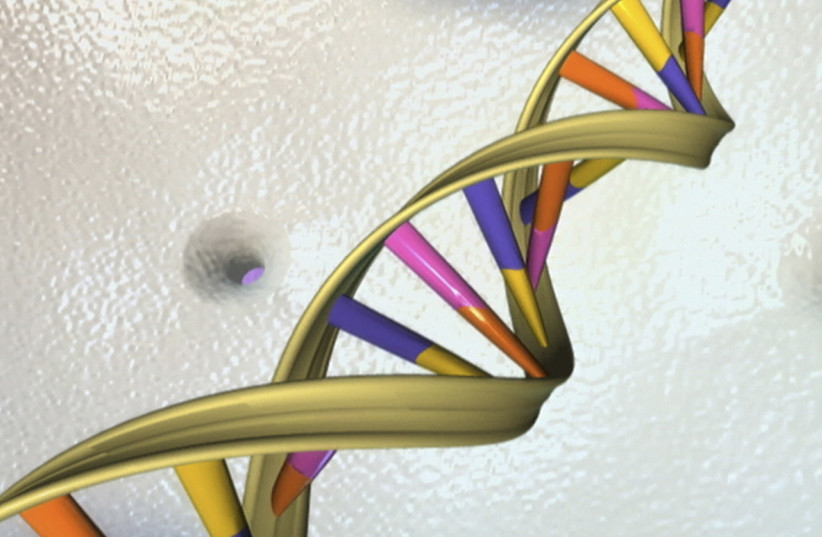Last year two cases of human chimeras made headlines. The first was singer Taylor Muhl from California who discovered that she has two types of DNA: hers and her non-existent twin sister. That is, in her mother’s case, two separate eggs were fertilized by two different sperm cells yet Taylor absorbed the genetic traits of the second embryo in the first stages of development.
In Greek mythology, the chimera is a monster with the head of a lion, the body of a goat and the tail of a snake. But in biology, a chimera is a person made up of cells of more than one DNA set.
The second case is a father who discovered that his son wasn’t his, but rather his unborn twin brother’s. That is, he has two genetic structures: his own and that of his twin brother who died in the womb in the early stages of pregnancy. He absorbed the genetic load of his twin brother and passed it on to his son, so he discovered that he was actually his son’s uncle and that his nonexistent twin brother was the biological father.
In recent years, more and more such cases have been found and recently, researchers concluded that human chimeras are much more common than they thought. One case that intrigued researchers was that of a woman who discovered that she was both the mother and the uncle of her daughter.
Joanne Unis, a researcher in DNA testing at Columbia University, said there is no information on how often this medical anomaly occurs but after seeing about 20 confirmed cases, she said that she believes there are many more.
The case of Taylor Muhl
Unis spoke about the case at the International Symposium on Human Identification in Washington, DC last month. What started as a routine biological parenting check for a young girl quickly turned into a case involving many experts.
Parts of the exam showed that the mother isn’t actually the child’s mother, which is called maternal exclusion. Other results have shown that the child’s father isn’t her father, a result of paternal exclusion.
Also, the birth mother’s blood sample tested as male, containing the XY chromosomes found in biological males, not the two XX chromosomes expected for females. Some intersex people have XY chromosomes and develop female sexual anatomy, but they are usually infertile.
Unis said her first reaction was that someone made a mistake; there was an uproar in the lab and all tests had to stop. Yet the team found identical results when they repeated the test with the original blood samples. When scientists removed the mom from the equation, the test showed that the father is indeed a biological parent and the other male genes in the result weren’t present.
Unis suggested that this was a human chimera based on a case from 2002. She was part of a team that reported on a 52-year-old woman named Karen Keegan whose genetic testing for a kidney transplant showed that she was a tetragametic chimera: Tetra means four and gametes means sex cells, like sperm and egg.
Keegan’s genes were a mixture of four egg cells and sperm cells instead of the usual two. Her genetics came from two separately fertilized eggs that fused when her mother was pregnant with her. In Keegan’s case, both embryos were XX or biologically female, according to a report on her case in the New England Journal of Medicine.
For Muhl, the XY genetic signature dominated her blood and saliva samples, which confused the paternity test. However, her hair and cheek cells showed cell proliferation of XX.
Is chimerism becoming more widespread?
Robert Wenk, a genetic pathologist in Baltimore, stated that the child’s mother is a natural chimera. There are usually very few external signs that indicate this condition, which allows it to go under the medical radar.
Although there are few published cases of chimerism to date, it’s estimated that the condition may exist in up to 10% of the population. This is indicated by findings that show in 30% of births initial tests show signs of twins, although only one baby is born. This is called disappearing twin syndrome.
Wenk added that in rare cases of chimerism where neither XY nor XX cells dominate the reproductive organs, chimeric individuals can develop both male and female anatomy and are termed intersex which is very unusual. Because many chimeras appear normal and may not show functional reproductive defects, most human chimeras go undetected.
John Butler, a fellow at the National Institute of Standards and Technology and president of the International Society of Forensic Genetics, said that chimerism can be hard for people to wrap their heads around because those with the condition do not exist within the normal binary sex paradigm.
Butler added that we may see chimeras more often because of the global increase in babies born through IVF technology – more than 8 million in the last two decades. Often more than one embryo is implanted in the mother in fertility treatments which increases the possibility of merged embryos.
Chimerism can cause legal problems in parentage tests, Unis said, from alimony to divorce to fraud cases like that of Lydia Fairchild from Washington state who almost lost her children after genetic tests showed that she wasn’t the biological mother of her kids.
Returning to The Muhl case, Unis and her team also tested her two older children, a daughter and a son, to see if they had received some of the chimeric genes. Butler stated that there are signs that some of the chimeric genes of their “uncle” may have been transferred to them, but researchers must conduct further testing to rule out the possibility that these are everyday DNA mutations.
No one is actively seeking out and testing people for chimerism, so we don’t know how many people living with it exist among us now. Unis added that this is why the team chose to look at the whole family when they found out about the case. They tried to fully check this phenomenon.
The paternity testing team primarily tested whether the previously born son possessed the male chromosome of her missing twin, Unis said, to see if this is the first case of a Y chromosome being passed from mother to son, yet it wasn’t.




